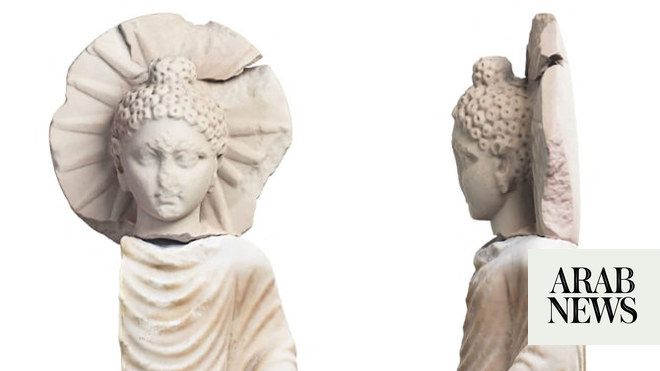
Wicker baskets filled with fruit that have survived from the 4th century BC and hundreds of ancient ceramic artefacts and bronze treasures have been discovered in the submerged ruins of the near-legendary city of Thonis-Heracleion off the coast of Egypt.
They have lain untouched since the city disappeared beneath the waves in the second century BC, then sank further in the eight century AD, following cataclysmic natural disasters, including an earthquake and tidal waves.
Thonis-Heracleion – the city’s Egyptian and Greek names – was for centuries Egypt’s largest port on the Mediterranean before Alexander the Great founded Alexandria in 331BC.
But the vast site in Aboukir Bay near Alexandria was forgotten until its re-discovery by the French marine archaeologist Franck Goddio two decades ago, in one of the greatest archaeological finds of recent times.
Colossal statues were among treasures from an opulent civilisation frozen in time. Some of the discoveries were shown in a major exhibition at the British Museum in 2016.
Goddio has been taken aback by the latest discoveries. He told the Guardian that the fruit baskets were “incredible”, having been untouched for more than 2,000 years.
They were still filled with doum, the fruit of an African palm tree that was sacred for the ancient Egyptians, as well as grape-seeds.
“Nothing was disturbed,” he said. “It was very striking to see baskets of fruits.”
One explanation for their survival may be that they were placed within an underground room, Goddio said, noting a possible funerary connotation.
It is within an area where Goddio and his team of archaeologists have discovered a sizeable tumulus (a mound raised over graves) – about 60 metres long by 8 metres wide – and sumptuous Greek funerary offerings.
They date from the early fourth century BC when Greek merchants and mercenaries lived in Thonis-Heracleion. The city controlled the entrance to Egypt at the mouth of the Canopic branch of the Nile. The Greeks were allowed to settle there during the late Pharaonic period, constructing their own sanctuaries.
Goddio said of the tumulus: “It is a kind of island surrounded by channels. In those channels, we found an unbelievable amount of deposits made of bronze, including a lot of statuettes of Osiris [the ancient Egyptian fertility god].
“On that island, something totally different. We found hundreds of deposits made of ceramic. One above the other. These are imported ceramic, red on black figures from Attic.”
The finds are all the more intriguing because there were vast quantities of miniature ceramics – high-quality Ancient Greek examples, including amphorae– under the tumulus. Bronze artefacts were around the tumulus, including mirrors and statuettes.
Goddio also found extensive evidence of burning, suggesting a “spectacular” ceremony that led to people being barred from entering this site again. It appears to have been sealed for hundreds of years as none of the artefacts found were from later than the early fourth century, even though the city lived on for several hundred years.
“There’s something very strange here,” he said. “That site has been used maybe one time, never touched before, never touched after, for a reason that we cannot understand for the time being. It’s a big mystery.”
He hopes to find answers within some of the treasures, which include the well-preserved remains of a wooden sofa for banquets, a large Attic vase and a gold amulet of “exquisite quality”.
About 350 metres away, the archaeologists also found a unique Ptolemaic galley, 25 metres in length. While built in the classical tradition, with mortise-and-tenon joints, it also contains features of ancient Egyptian construction, with a flat-bottomed design that would have been perfect for navigation on the Nile and in the delta.
The European Institute for Underwater Archaeology, led by Goddio, works in close cooperation with Egypt’s ministry of tourism and antiquities and with the support of the Hilti Foundation. The finds will be studied and preserved before being put on display in museums.
The potential for further discoveries is tantalising. Even after conducting repeated excavations over the past two decades, Goddio estimates that only about 3% of the area has been explored so far.












